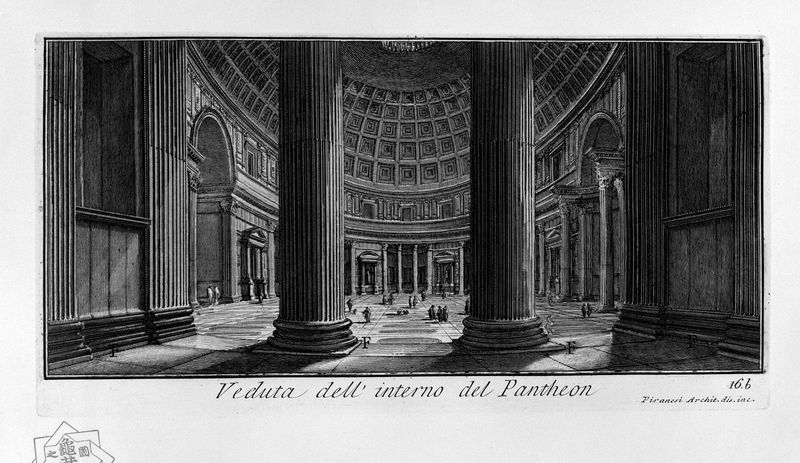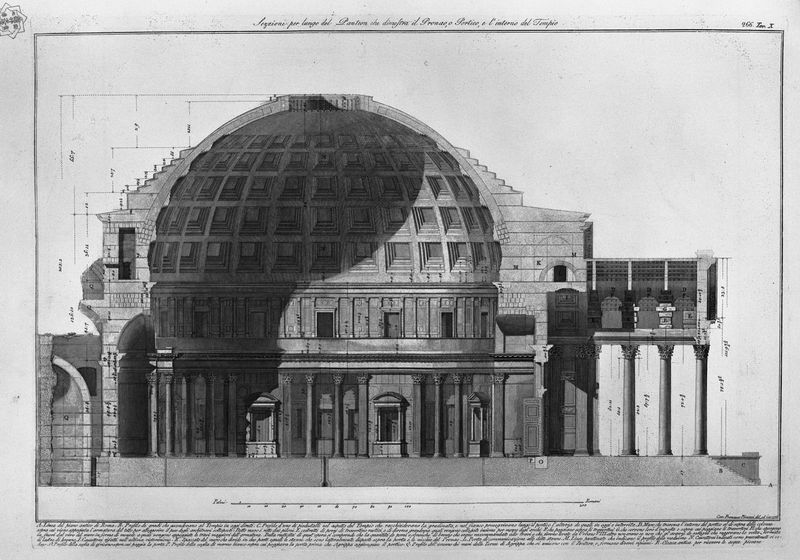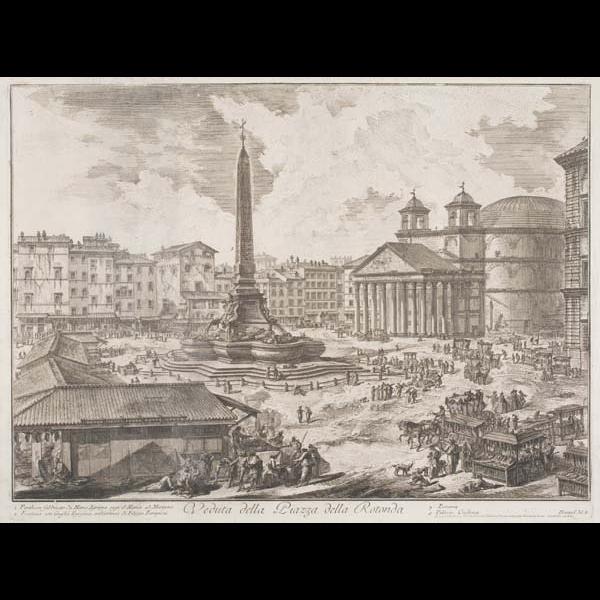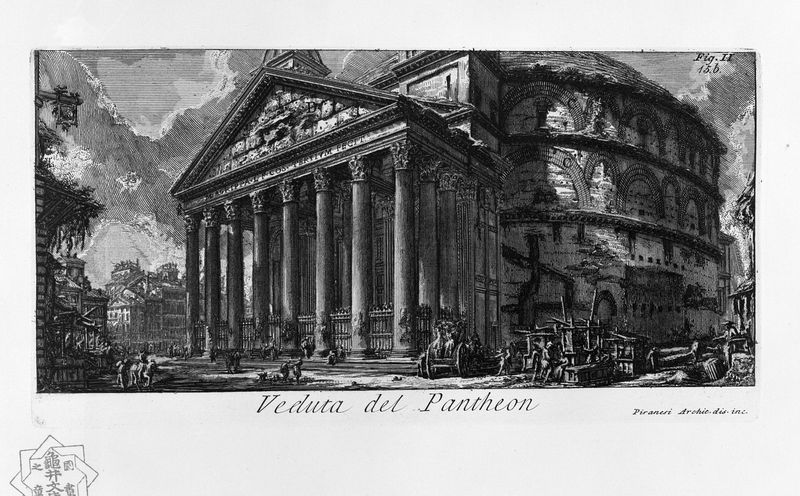Piranesi's Pantheon
This print is Giovanni Battista Piranesi’s Veduta della Piazza della Rotunda etched in 1751. This was a part of the 1747 series, called Vedute di Roma (Views of Rome), in which he etched several plates showing historical monuments and notable landmarks in the city. This etching of the Pantheon, completed in 1751, interestingly does not place central emphasis on the Pantheon itself, but rather, more on its surroundings. In this particular work, Piranesi provides more of a historical and environmental context for the monuments depicted.
The value of this etching lies in its portrayal of the Pantheon as Piranesi saw it. Here the Pantheon and the Obelisk are immersed within the context of everyday Rome, surrounded by the hustle and bustle of the lively piazza. Fish markets, horse-drawn carriages, and shoppers divert the attention from the grandiose monuments and reveal its casual interaction with Piranesi’s contemporary society.

Piranesi's 1756 Veduta dell'interno del Pantheon showcases the artist's skill in etching and enthusiasm for interesting composition. Here, he provides a view of the Rotunda's interior, partially obscured by two columns in the foreground, which give a sense of the view from the cavities of the structure's walls. The vertical stability these classical Greek features provide an engaging contrast aganist the Roman dome and Rotunda, which curve upwards in the background.

Piranesi drew this cross-section of the Pantheon in 1790. After his drawings of the monument in the 1750s, he still maintained a profound interest in the building decades later. This drawing contrasts his more artistic previous representations of the Pantheon; this highly observant study of the structure shows Piranesi's interest in architecture and accuracy.

